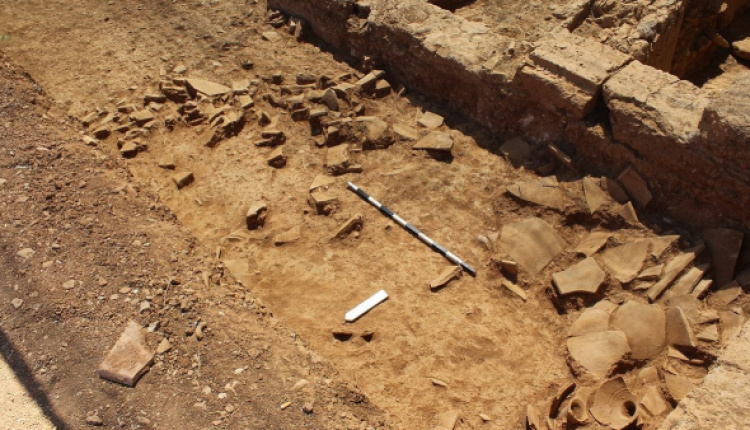Roman-Era Wine Shop Discovered In Greece
- by XpatAthens
- Thursday, 25 January 2024

Archaeologists in Greece discovered a 1,600-year-old Roman-era wine shop that met its end due to a sudden event, possibly an earthquake or building collapse. The findings include broken vessels and sixty scattered coins, offering a glimpse into the past.
This ancient shop was active during the time when the Roman Empire had control over the region. The site of this discovery is the ancient city of Sikyon (Sicyon), situated on the northern coast of the Peloponnese in southern Greece.
As experts explored the wine shop, they unearthed not just coins but also bits of marble tabletops and various vessels crafted from bronze, glass, and ceramic, reported Live Science.
Unclear about types of wine
In a recent presentation at the annual meeting of the Archaeological Institute of America in Chicago, archaeologists revealed that the wine shop was situated on the northern part of a larger complex.
This complex housed several workshops equipped with kilns and installations specifically designed for pressing grapes or olives.
Scott Gallimore, an associate professor of archaeology at Wilfrid Laurier University in Canada, and Martin Wells, an associate professor of classics at Austin College, explained via email that there is no direct evidence about the specific types of wine sold at the shop.
Although they found grape pips (Vitis vinifera), the researchers are unable to provide more detailed information at this time.
Apart from wine, the shop might have also traded in other goods, such as olive oil. Scott Gallimore said the majority of the coins discovered belong to the era of Constantius II, spanning from 337 to 361. The most recent coin in the collection was minted sometime between 355 and 361, as revealed in a Live Science email.
Destruction as a result of an earthquake or roof collapse
The wine shop, according to Scott Gallimore, seems to have experienced a “sudden event” leading to its destruction and abandonment. The sixty bronze coins discovered on the floor date back to the final moments of the shop.
The coins were all scattered about on the floor of the shop. This suggests they were kept together, possibly in a ceramic container or some sort of bag. When the shop was destroyed, it seems the container fell to the floor, as did the coins, Gallimore explained.
There is currently uncertainty about the nature of the event. The destruction could have been caused by an earthquake or a possible roof collapse caused by environmental factors, such as excessive rainfall, said Gallimore. Following the destruction, there was debris and sediment all over the place, but no attempt was made to retrieve anything from it.
The larger complex, including the shop, seems to have been deserted in the early fifth century, potentially around the time of the destructive event.
Originally published on: greekreporter.com
Originally published on: greekreporter.com
Photo Credit: Scott Gallimore


